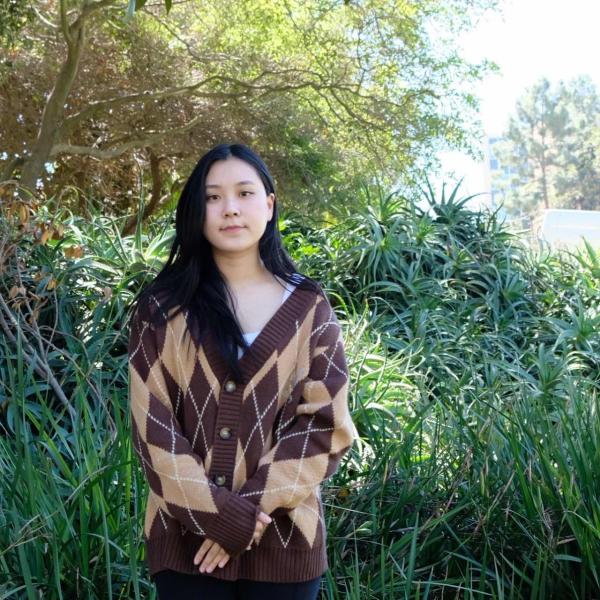Cancer Technologies
(G-257) Sorting chemotherapeutic-resistant cells from recently resected glioblastoma tumors

Vi P. Dang, MS (she/her/hers)
Graduate Student
University of California, Irvine
Irvine, California, United States- AJ
Alan Jiang, PhD
postdoctoral researcher
University of California, Irvine, United States - JH
J. Nicole Hanomoto
Lab Manager
University of California, Irvine, United States 
Nicole S. Lav (she/her/hers)
undergraduate researcher
University of California, Irvine
Cerritos, California, United States- CD
Christopher Douglas
Graduate Student
University of California, Irvine, United States - DB
Daniela Bota
Principal Investigator
University of California, Irvine, United States - LF
Lisa Flanagan, PhD
Principle Investigator
University of California, Irvine, United States
Presenting Author(s)
Co-Author(s)
Primary Investigator(s)
Glioblastoma (GBM) is the most common primary malignant brain tumor in adults and is diagnosed in 14,000 people annually in the United States alone. Despite current treatment options, the median survival of GBM patients is only 15-18 months following diagnosis. This is often attributed to cellular heterogeneity in GBM tumors, including cell subpopulations that show resistance to the standard chemotherapy drug temozolomide (TMZ). Our lab utilized dielectrophoresis (DEP) to characterize these TMZ-resistant GBM cells. DEP can be used for label-free cell characterization and sorting as it is sensitive to cell electrophysiological properties. We previously employed this method to sort cells from established GBM cell lines, D54 and U251, and found significant differences in membrane electrophysiological properties and TMZ resistance between the sorted cell fractions. However, established cell lines may not accurately represent cells in GBM patient tumors as they have been cultured for an extended period of time since initial isolation from the primary tumor. Thus, we aim to utilize DEP to sort GBM cells that are recently derived from patient tumors and thus more representative of clinical GBM tumor cells. We hypothesize that DEP sorting will yield populations that significantly differ in both electrophysiological properties and TMZ resistance. Enriching cells of varying TMZ resistance would provide insight into potential mechanisms of TMZ resistance, identify novel biomarkers of resistance, and lead to more effective treatments for GBM.
Materials and Methods::
GBM cells (DB70) recently derived from patient tumors were acquired from Dr. Daniela Bota, a neuro-oncologist at University of California, Irvine. DB70 cells were dissociated into single cells, resuspended in an isotonic DEP buffer formulated at 100 uS/cm conductivity, and then sorted using a modified hydrodynamic oblique angle parallel electrode sorting (HOAPES) DEP device (Jiang et al., Biomicrofluidics 2019). Cells were introduced into the device and hydrophoretically aligned before passing through the non-uniform electric field for DEP sorting. Sorting parameters were selected using a spherical single-shell model such that the frequency was particularly sensitive to cell membrane properties. Cells with high capacitance experience a strong positive DEP force that focuses the cells toward the middle channel of the device, while cells with lower capacitance remain in their initial flow paths and exit the outer channels. This results in two sorted fractions: focused cells with higher membrane capacitance and unfocused cells with lower membrane capacitance. The sorted fractions were then cultured separately and analyzed after 1-3 passages. A 3DEP reader (DEPTech) was used to measure the sorted cells’ dielectric properties, including whole cell membrane capacitance, midpoint membrane frequency, membrane conductance, cytoplasmic conductance, and midpoint cytoplasm frequency. TMZ resistance was measured by treating sorted cells with 0-1200uM TMZ for 3 days before XTT was used to analyze cell viability to determine IC50 values. Unpaired student’s t-test was used for statistical analysis of two samples and one-way ANOVA with Tukey’s post-hoc was used for multiple comparisons. N=3 or more independent experiments.
Results, Conclusions, and Discussions::
Results: Analysis of cell electrophysiological properties after DEP sorting DB70 cells showed that the focused cell population exhibited a significantly higher membrane capacitance compared to the unfocused cell population (Fig. 1A). The sorted cell fractions did not significantly differ in their membrane conductance, midpoint membrane frequency, cytoplasmic conductance, and midpoint cytoplasm frequency. Regarding TMZ resistance, the focused cell population was significantly more resistant to TMZ compared to the unfocused population (Fig. 1B). Thus, DEP effectively sorted DB70 GBM cells into populations that differed in electrophysiological properties and TMZ resistance.
Conclusions: GBM cells recently derived from patient tumors can be sorted by DEP into populations differing in whole cell membrane capacitance and TMZ resistance. Moreover, sorted cells with higher membrane capacitance were more resistant to TMZ, while sorted cells with lower membrane capacitance were more sensitive to TMZ.
Discussions: DEP can be utilized to sort GBM cells recently derived from patient tumors based on differences in cell electrophysiological properties. The sorted cells are particularly clinically relevant as they may represent cell populations in GBM patient tumors in situ, capturing important cellular properties more accurately than cells sorted from established GBM cell lines. Moreover, sorted cells with higher membrane capacitance exhibited high TMZ resistance, revealing a direct correlation between TMZ resistance and whole cell membrane capacitance. Thus, DEP sorting can be used to enrich TMZ resistant cells from recently resected patient tumors and enable further characterization of their cellular properties. This is especially valuable for understanding TMZ resistance mechanisms, identifying novel biomarkers of resistance, and aiding in the development of patient-specific treatment plans for otherwise treatment-resistant GBM.
Acknowledgements (Optional): :
References (Optional): :
